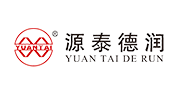Steel pipe is an essential component in a variety of industries and applications, providing structural support, conveying fluids and facilitating efficient transportation.
This article aims to provide an in-depth look at the key differences between EN10219 and EN10210 steel pipes, focusing on their usage, chemical composition, yield strength, tensile strength, impact properties, and other key factors.
The key differences between EN10219 and EN10210 steel pipes, focusing on their usage, chemical composition, yield strength, tensile strength, impact properties, and other key factors.
usage: EN10219 steel pipes are mainly used in structural applications such as construction, infrastructure development and building frames. On the other hand, EN10210 steel pipes are widely used in the manufacture of hollow sections, which are used in mechanical engineering, automotive and various other structural projects.
chemical composition: The chemical composition of EN10219 and EN10210 steel pipes is different, which directly affects their mechanical properties. EN10219 pipes are generally lower in carbon, sulfur and phosphorous than EN10210 pipes. However, the exact chemical composition may vary depending on the specific grade and manufacturer.
Yield Strength: Yield strength is the stress at which a material begins to deform permanently. EN10219 steel pipes generally exhibit higher yield strength values compared to EN10210 steel pipes. The enhanced yield strength of EN10219 pipe makes it more suitable for applications requiring increased load carrying capacity.
tensile strength: Tensile strength is the maximum stress a material can sustain before breaking or cracking. EN10210 steel pipes generally exhibit higher tensile strength values compared to EN10219 steel pipes. The higher tensile strength of EN10210 pipe is advantageous where the pipe is subjected to higher tensile loads or compressions.
Impact performance: The impact performance of steel pipe is critical, especially in applications where low temperatures and harsh environments are prevalent. EN10210 pipe is known for its superior impact toughness compared to EN10219 pipe. Therefore, EN10210 pipes are often favored in industries where resistance to brittle fracture is critical.
Other points:
a. Manufacturing: Both EN10219 and EN10210 pipes are manufactured by hot working or cold forming methods, depending on the specific requirements.
b. Dimensional tolerances: EN10219 and EN10210 pipes have slightly different dimensional tolerances and this should be considered to ensure proper fit and compatibility in various applications.
c. Surface finish: EN10219 and EN10210 pipes may have different surface finishes depending on the manufacturing process and surface preparation requirements.
in conclusion: EN10219 and EN10210 steel pipes have different uses in various industrial applications. Understanding key differences in their purpose, chemical composition, yield strength, tensile strength, impact properties, and other key points is crucial in selecting the most suitable steel pipe for a particular project or application. Whether for structural framing, hollow sections, or other engineering uses, a thorough understanding of these differences will ensure optimal performance and reliability of the steel pipe selected.

Post time: Aug-09-2023









